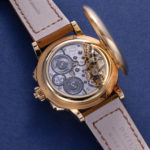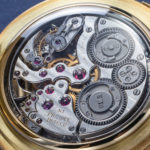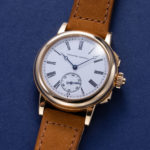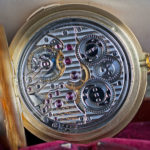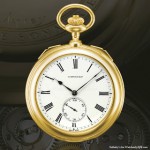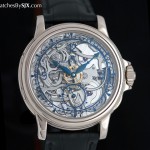Hands On: Audemars Piguet Grande Sonnerie Pocket Watch by Philippe Dufour
The genesis of a storied career in independent watchmaking.
Arguably the master of movement decoration, Philippe Dufour is revered for the impeccable finishing of his wristwatches – along with a handful of pocket watches, including the Grande Sonnerie pocket watch that sold in 2021 at Philips for CHF2.33 million including fees.
But the first timepieces Mr Dufour made never bore his name on the dial. They were a series of five grande sonnerie pocket watches created for Audemars Piguet (AP) that he began in the late 1970s and completed in 1988.
The very first of the five, the Grande Sonnerie Pocket Watch no. 1 – by Philippe Dufour for Audemars Piguet – will go under the hammer at Philips’ upcoming Geneva auction taking place on May 13 and 14, 2023.
(Video courtesy of Phillips)
Initial Thoughts
Having slowly gone out of fashion starting in the early 2000s, pocket watches tend to go under the radar when set against comparable wristwatches. In 2021, Philippe Dufour’s own Grande Sonnerie wristwatch sold for more than double his grande sonnerie pocket watch – in the same auction.
However, anyone who understands independent watchmaker and Mr Dufour’s work will appreciate the significance of this pocket watch. This not only predates the Philippe Dufour brand, but the series of five watches made for AP was the impetus for him to strike out on his own.
Because of what he perceived as deeply disrespectful behaviour by AP executives, Mr Dufour vowed never again to make watches for others after completing the five watches for AP. The end of the AP project is when Mr Dufour began his slow ascent into the independent watchmaking hall of fame. Put another way, this pocket watch was the genesis of Philippe Dufour as an independent watchmaker.
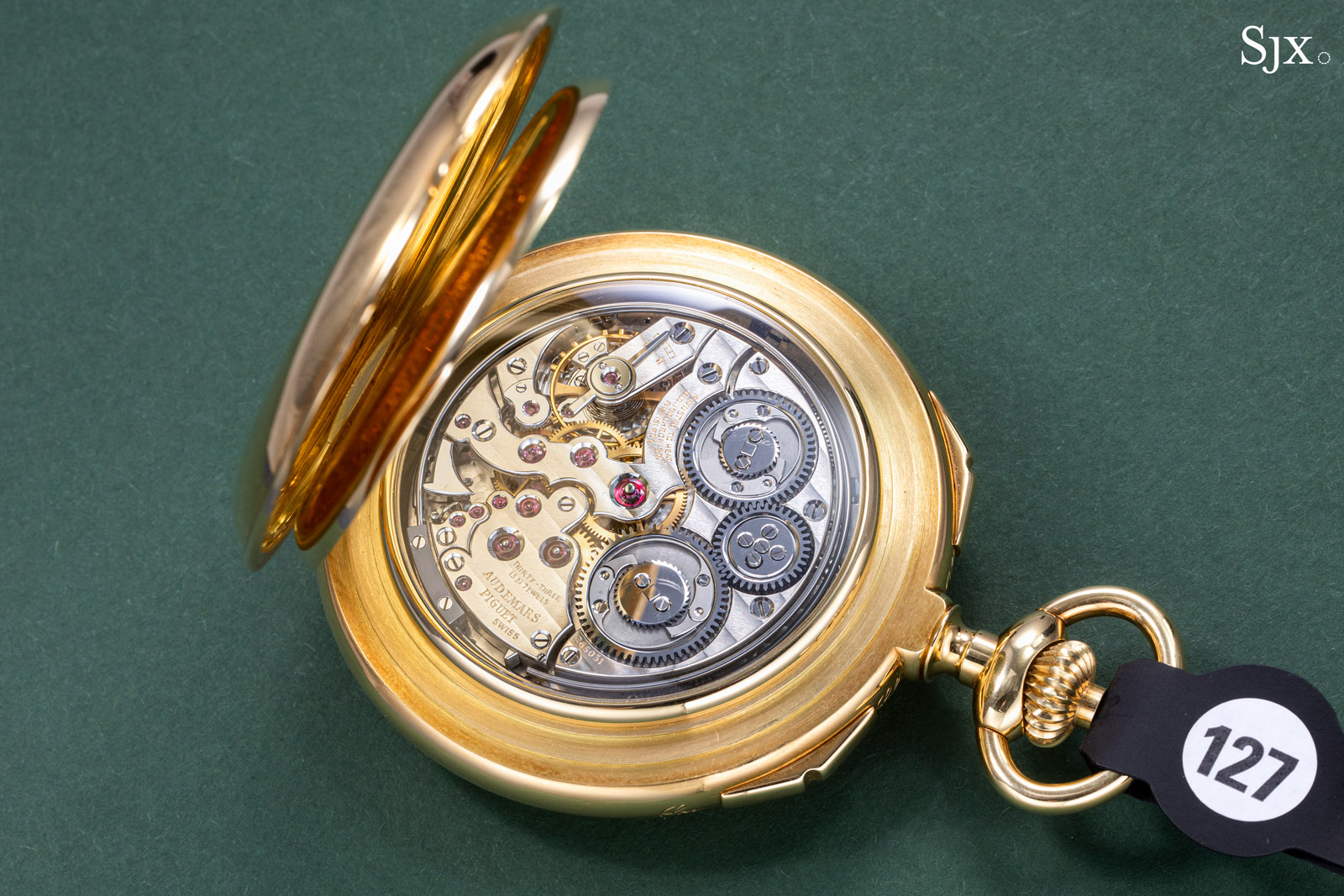
Aside from the AP name on the dial, this pocket watch is practically identical to those Mr Dufour made later under his own name. The movement is as lavishly finished as it can be, even by today’s competitive standards in independent watchmaking. Four decades on, it remains an outstanding achievement in traditional construction and decoration.
But the keen-eyed enthusiast deeply familiar with Mr Dufour’s work will notice that this is clearly the work of an up and coming watchmaking, rather than the veteran that Mr Dufour is today. His prowess in finishing clearly improved as the years passed and that is apparent in the watches he made more recently.
But put in context, this pocket watch was an incredible achievement for a young watchmaker – Mr Dufour was only 34 years old when he delivered it to AP. There are few watchmakers who can claim such accomplishment at that age, except maybe for Francois-Paul Journe and Rexhep Rexhepi.
With an estimate of CHF400,000-800,000 – modest as such things go – it would not be surprising to see this breaking the high estimate. But the lack of Mr Dufour’s name on the dial – he only signed the movement under the dial – along with the niche appealing of pocket watches might make this something of a value buy. Even at well over the high estimate, this is well priced compared to the Dufour-signed grande sonnerie pocket watch that sold for over CHF2 million in 2021.
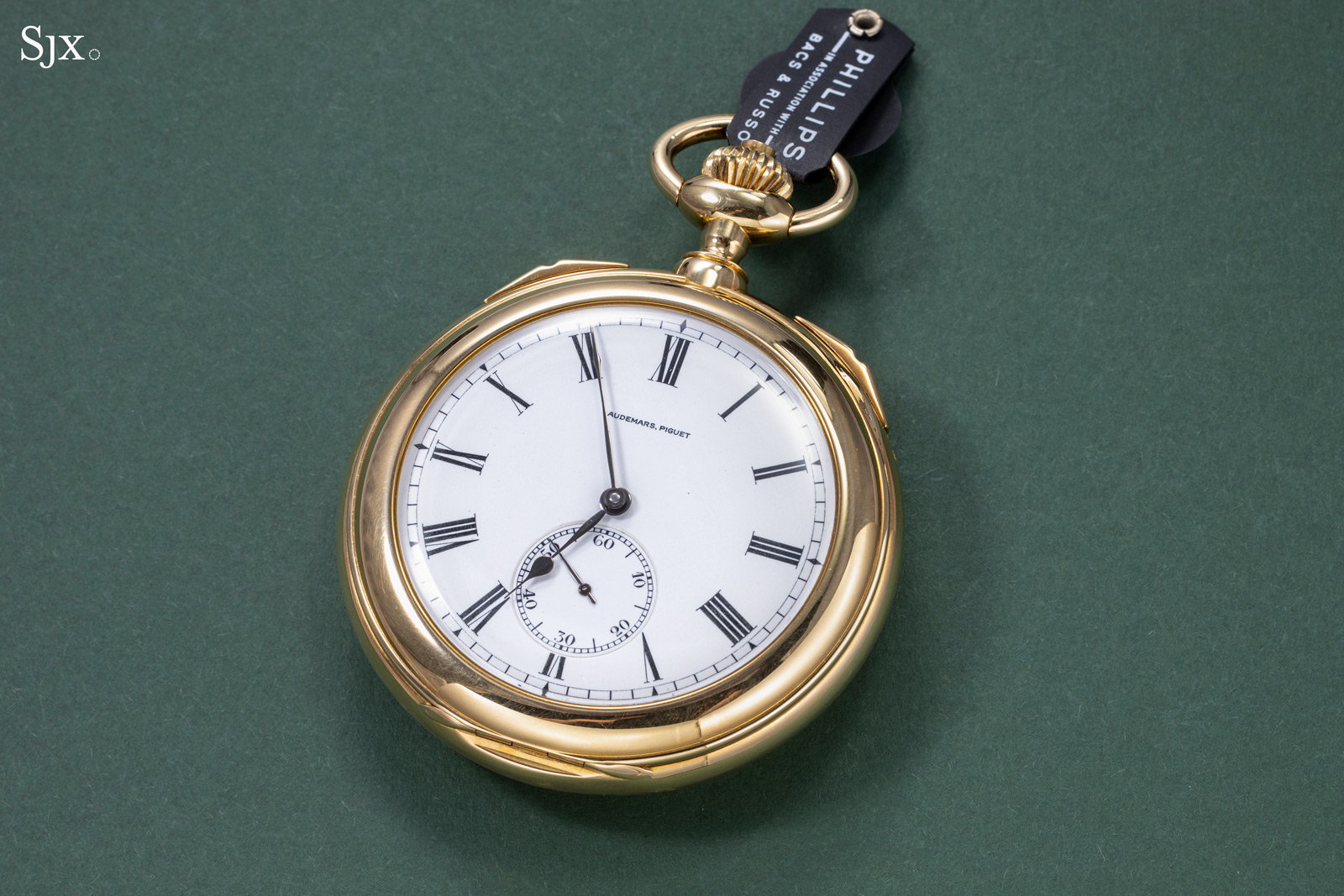
The first
Mr Dufour completed this Grande Sonnerie pocket watch in 1982, the first of five that AP ordered. He made about one a year, with the final watch delivered in 1988. He has recounted on many occasions that each watch took about 2,000 hours of work, equivalent a year’s worth of full-time work.
Prior to that, Mr Dufour’s career was varied. He started out as a watchmaker at several brands, working in Switzerland and as faraway as the Virgin Islands. He then spent most of the 1970s restoring vintage timepieces – his clients then included the predecessor of Antiquorum – where the realised that most of the best watches contained movements that originated in the Vallée de Joux, where he was born as it happens.
This experience helped him develop his watchmaking philosophy, which is essentially a reverential homage to the greatest works of the Vallée in its heyday, namely the late-19th to mid-20th century when movement makers like Ami LeCoultre and Louis-Elisee Piguet were plying their trade. Thus, the Grande Sonnerie pocket watch no. 1 possesses great significance as Mr Dufour’s first watch, one he built from the ground-up as an embodiment of the grand heritage of the Vallée de Joux.
AP Grande Sonnerie pocket watch no. 1, along with its four siblings, do not have Mr Dufour’s name visible on the outside as each was only signed by AP, and perhaps the retailer that sold the watch as is the case for no. 1. Instead, the only evidence that Mr Dufour created these watches is “P. Dufour” engraved on a bridge hidden under the dial of pocket watch no. 1.
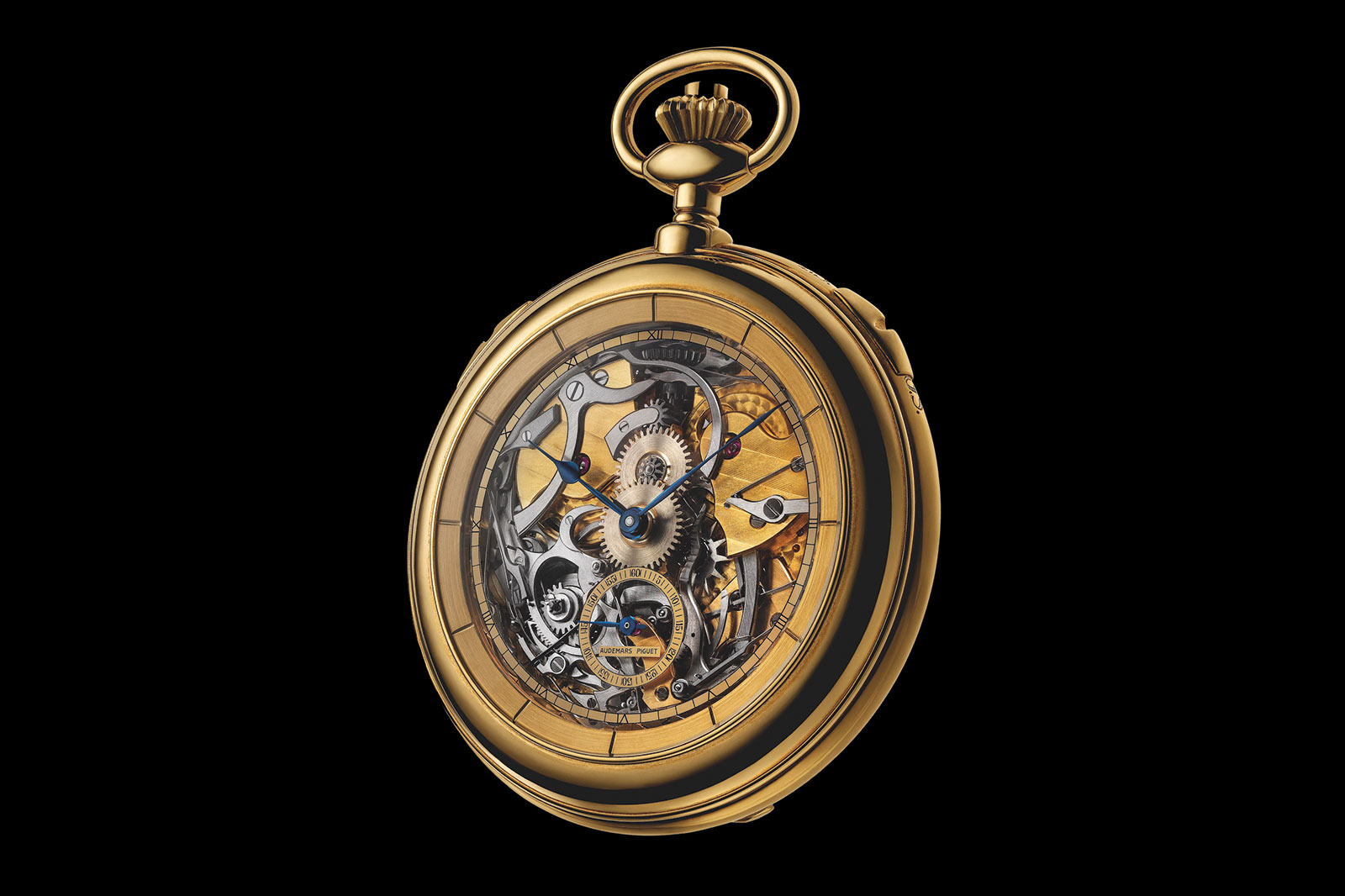
The fifth and final watch made for AP features a sapphire dial that reveals beautiful finish and motion of the striking mechanism that would be otherwise hidden. But this watch no longer bears Mr Dufour’s signature on the movement since it would have been visible on the front. Image – Audemars Piguet
Mr Dufour has said that the lack of recognition for his work frustrated him, but he catalyst for him going independent was the unfortunate experience when working with AP. First, AP returned one of the grande sonnerie pocket watches to him for repair after it was damaged during transportation to and from a watch exhibition. According to Mr Dufour, it was packed unprotected with other watches in a container, resulting in damage to the case.
But the greatest indignity came later on when another of the grande sonnerie pocket watches was conveyed to another exhibition by an AP employee who merely slipped the watch into his jacket pocket. As Mr Dufour tells it, the jacket was between the frame and door of the employee’s car when he closed the door on the watch.
Perhaps a silver lining that these were the driving force for Mr Dufour to go independent, shaping its landscape today.
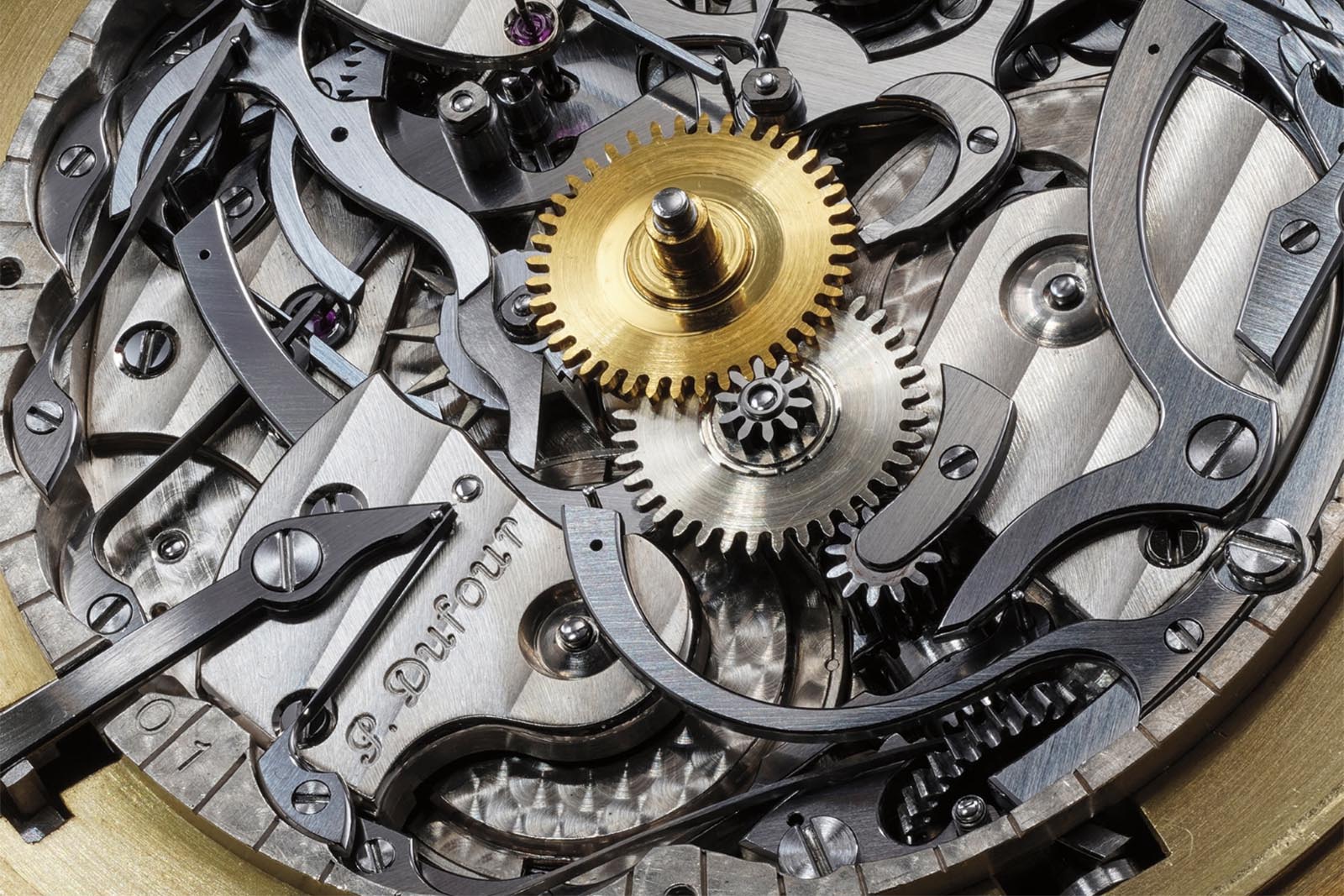
Mr Dufour signed the movement with a pantograph. Image – Phillips
Classical aesthetics
Eminently classical as was convention for its time, the Grande Sonnerie pocket watch has a massive 61 mm case of 18k yellow gold to house the grande and petite sonnerie movement. The movement was made by Mr Dufour, while the case and dial were outsourced to suppliers.
Expansive and legible, the dial is a two part affair of fired enamel, with the recessed register for the seconds separate from the main dial. The hands are equally traditional – spade form in blackened steel, which gives them good contrast against the white enamel.
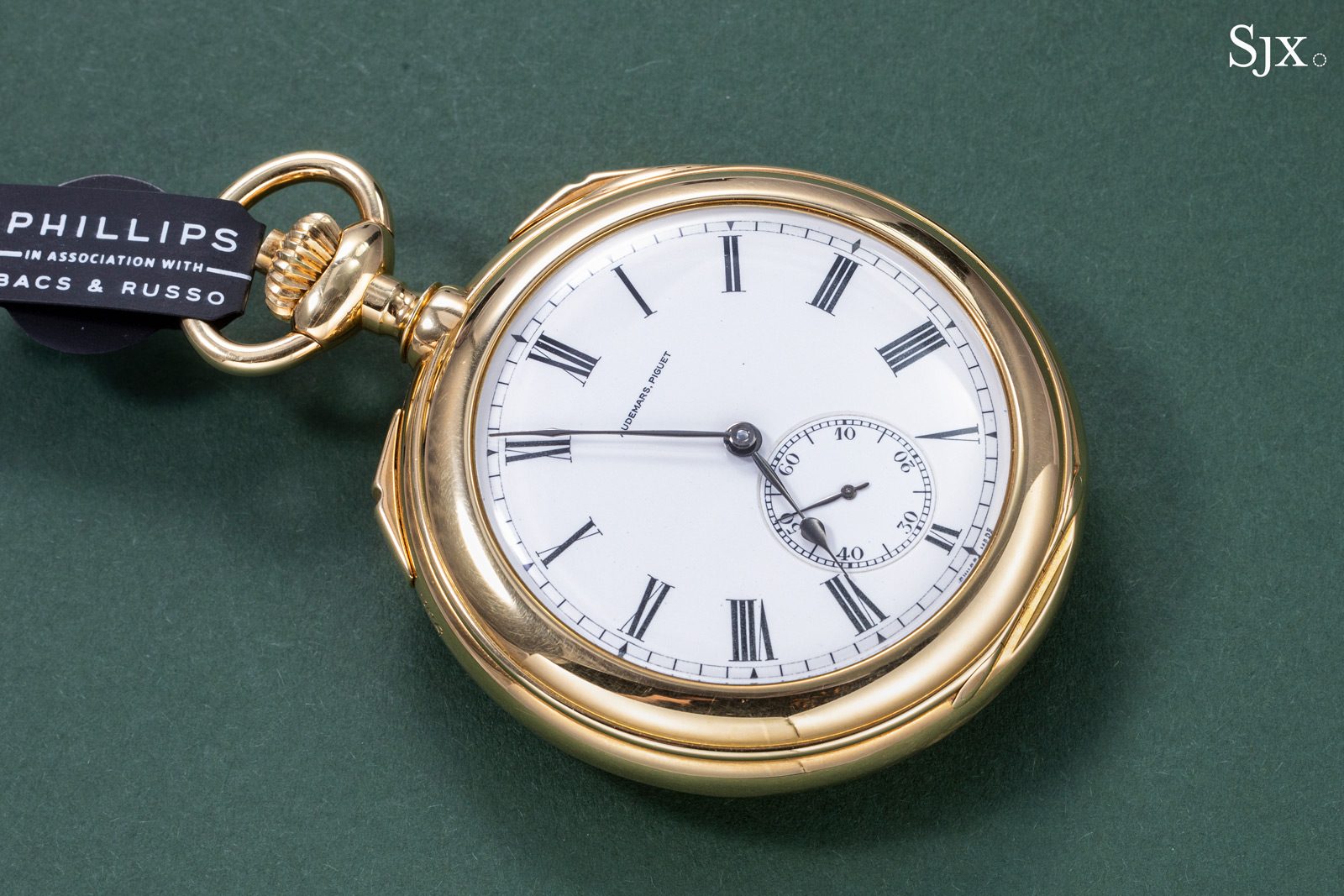
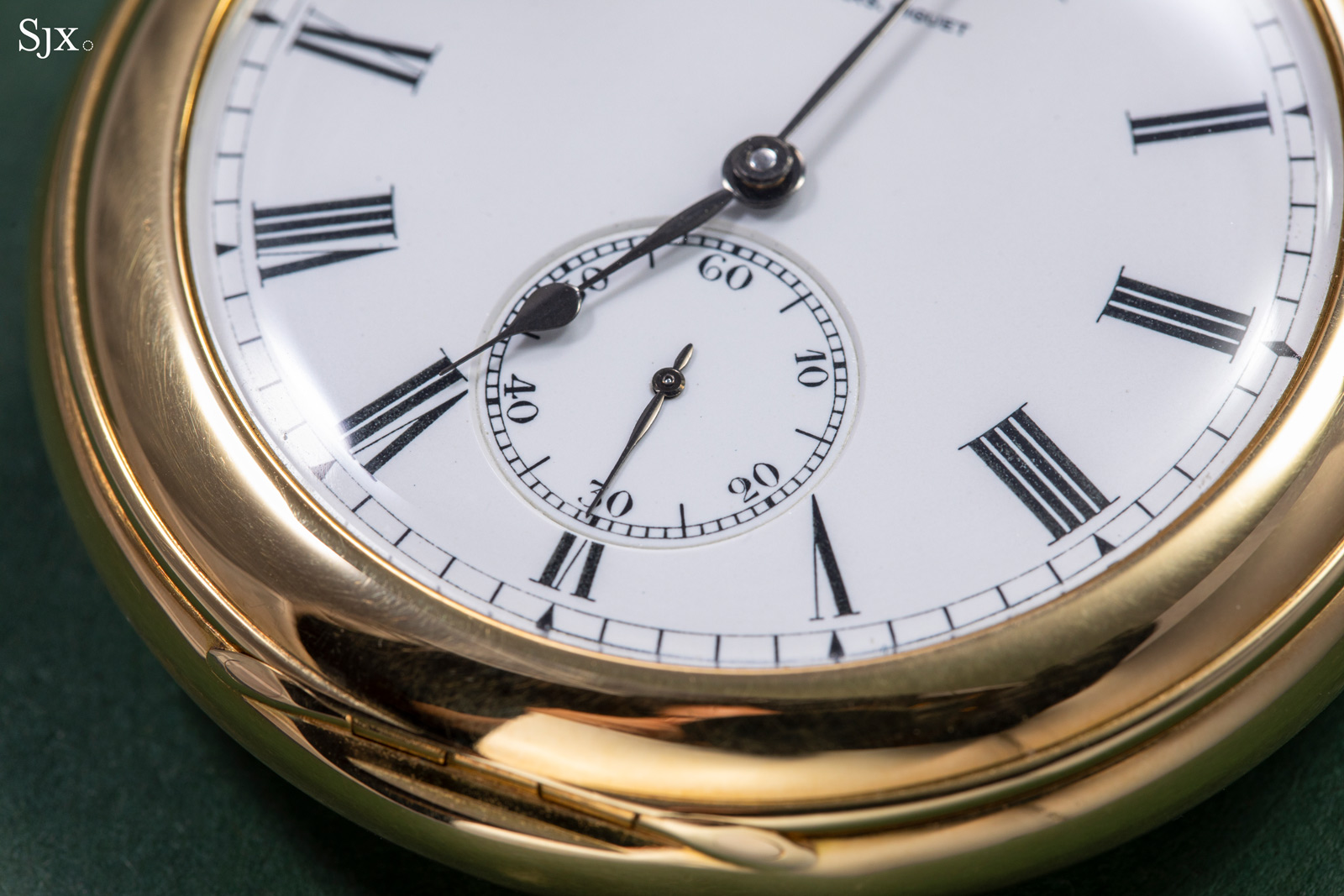
Located at 12 o’clock is the signature of AP – the brand gave Mr Dufour his start as an independent watchmaker and spurred him to make watches under his own name. Compact and discreet, the AP logo is intriguing as it is clearly vintage in style and predates this pocket watch by some decades. While AP wristwatches of the 1970s and 1980s feature the modern-day rendering of the brand, the dial of the pocket watch reads “Audemars, Piguet”, a form that dates to the mid-20th century and earlier.
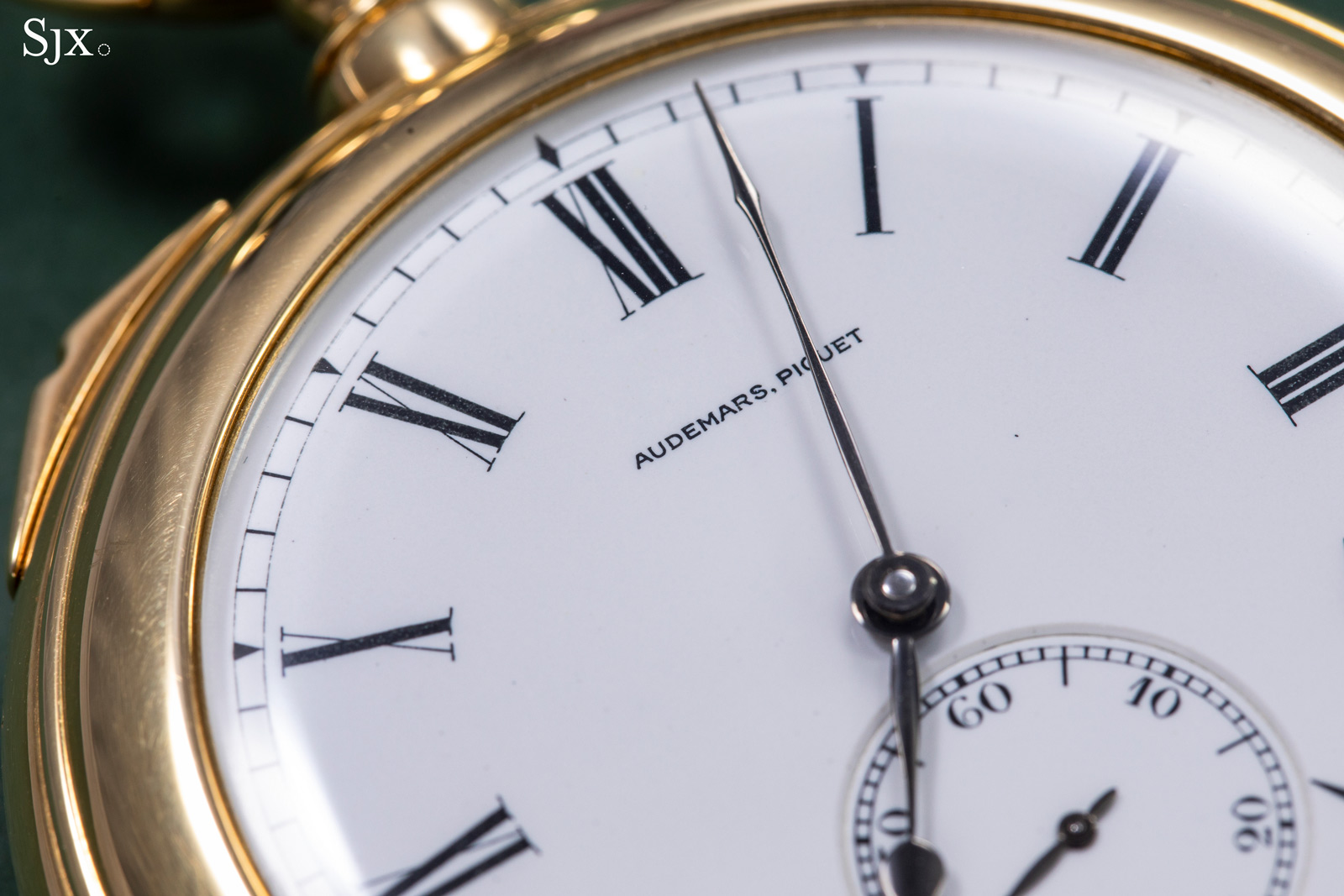
The case is hunter style, giving it double case backs. Opening the first hinged back reveals a second hinged back that reveals important details: the brand, the complication, along with “No. 1” and “Asprey”. The markings indicate this was the first of the five grande sonnerie watches made for AP and it was retailed by Asprey, the London jeweller that was at the height of its powers in the late 20th century.
Compared to the restrained dial, the inner case back is almost fancy. The engraving is all clearly done by hand, with six stars for decoration and the Asprey logo done in its signature serif font.
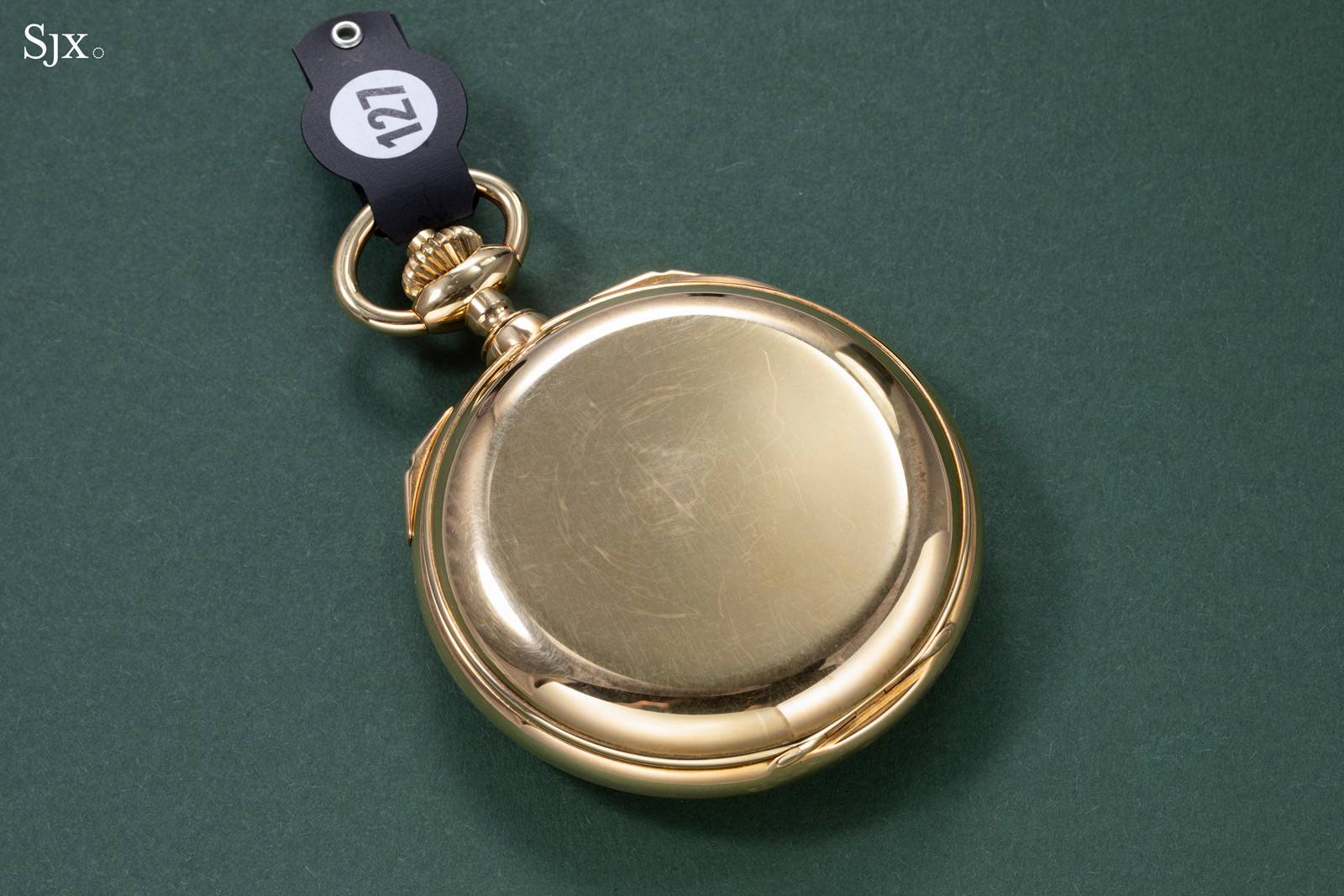
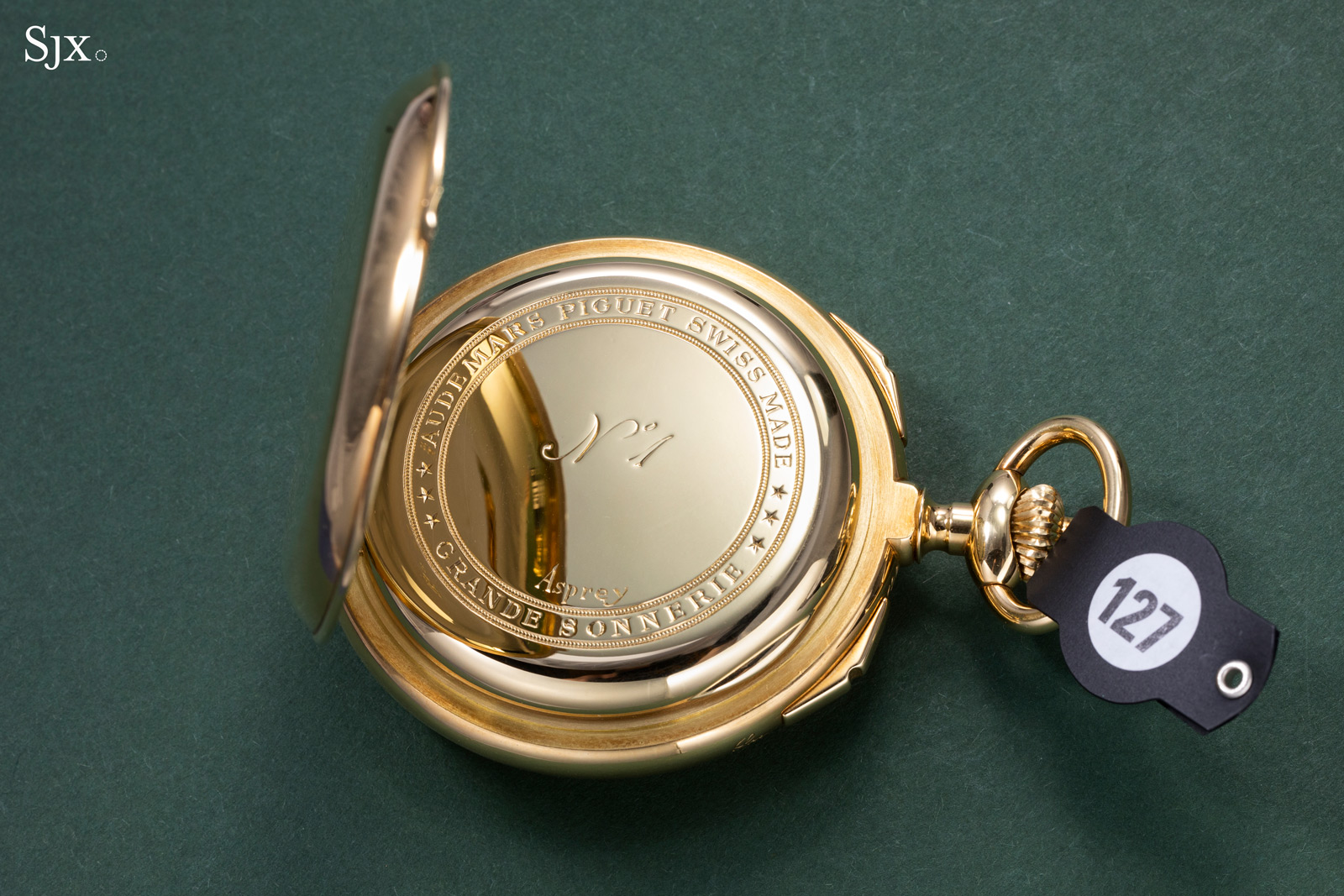
The other crucial detail of the case are the two sliders next to the crown – a giveaway that this is no ordinary watch but a grand and petite sonnerie.
The slide at one o’clock (when viewed from the dial) toggles between the striking modes of grande sonnerie (full strike every hour and quarter) and petite sonnerie (strike on quaters only), while the slide at 11 o’clock silences the striking mechanism. A pusher located coaxially in the crown activates the minute repeater on demand.
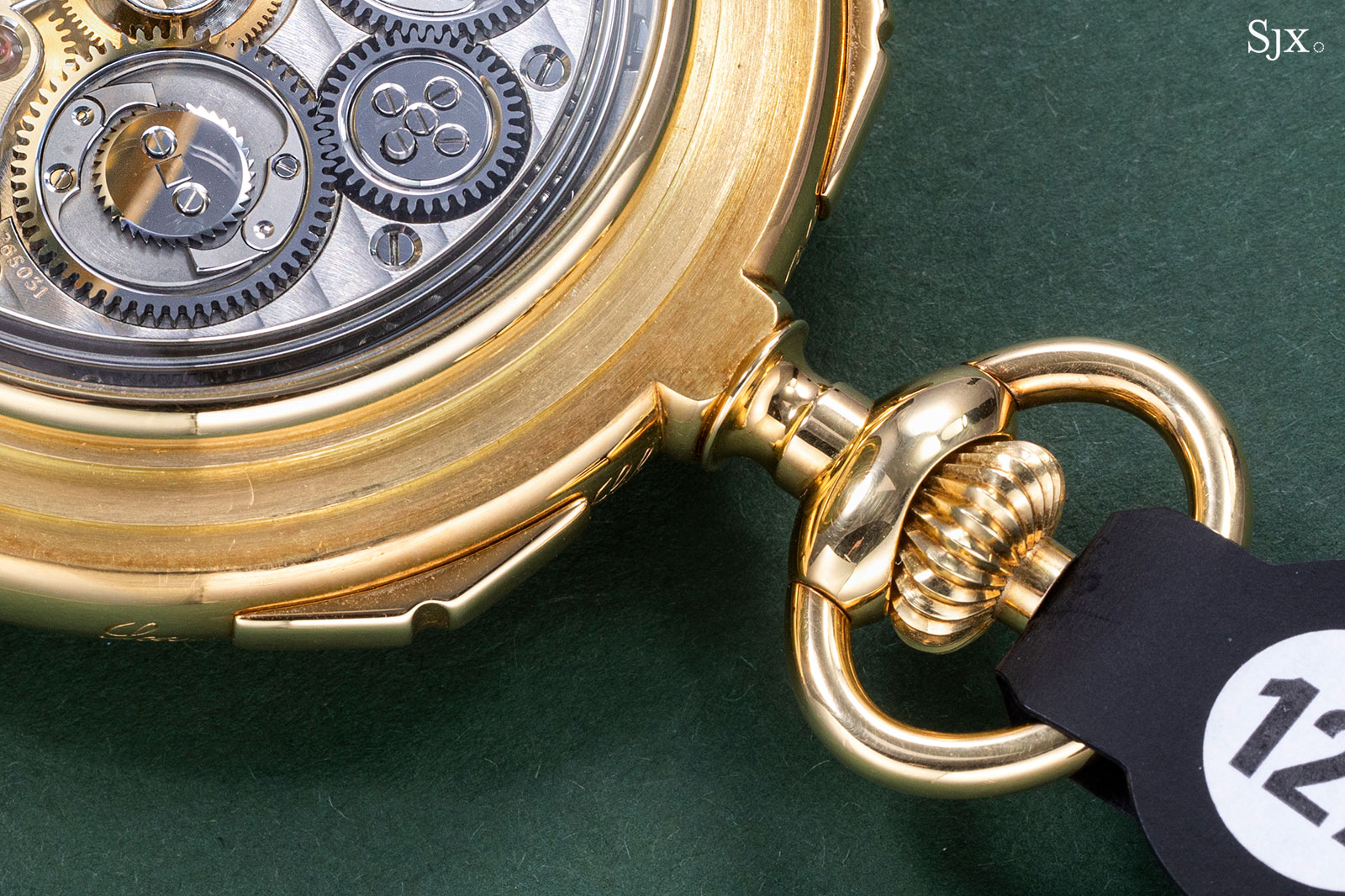
A Vallée de Joux masterpiece
Most important, however, is what’s on the inside, under the double back. Lift the inner back and the grande sonnerie movement is revealed in all its glory.
Gracefully much classical in construction, the movement instantly evokes the technical expertise of the Vallée de Joux in the decades around the turn of the last century. In a way, that is precisely the point. Mr Dufour has stated that its construction was modelled on a grande sonnerie calibre created by Reymond Freres, a firm established in 1901 that later evolved into Valjoux, the chronograph maker that eventually became part of ETA.
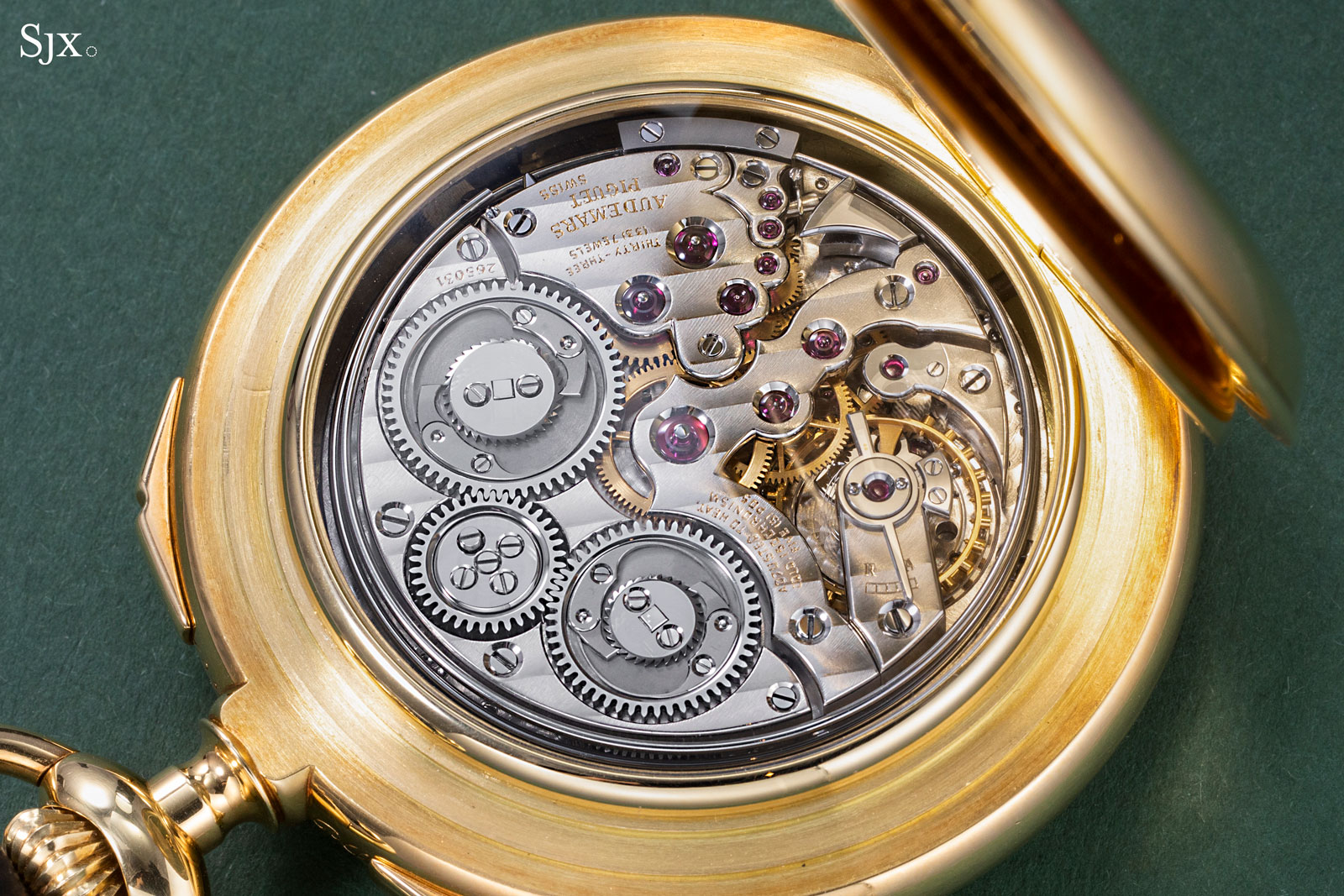
Given the classical construction, the movement seen from the rear is quickly familiar. It has the signature layout of a grande sonnerie with dual barrels – an upper barrel that powers the going train for timekeeping, along with an independent, lower barrel that powers the striking mechanism.
Each barrel is topped with a pair of elaborately-finished ratchet wheels and clicks – this winding setup is known as “grande sonnerie” style – allowing each barrel to be wound separately by turning the crown in either of two directions.
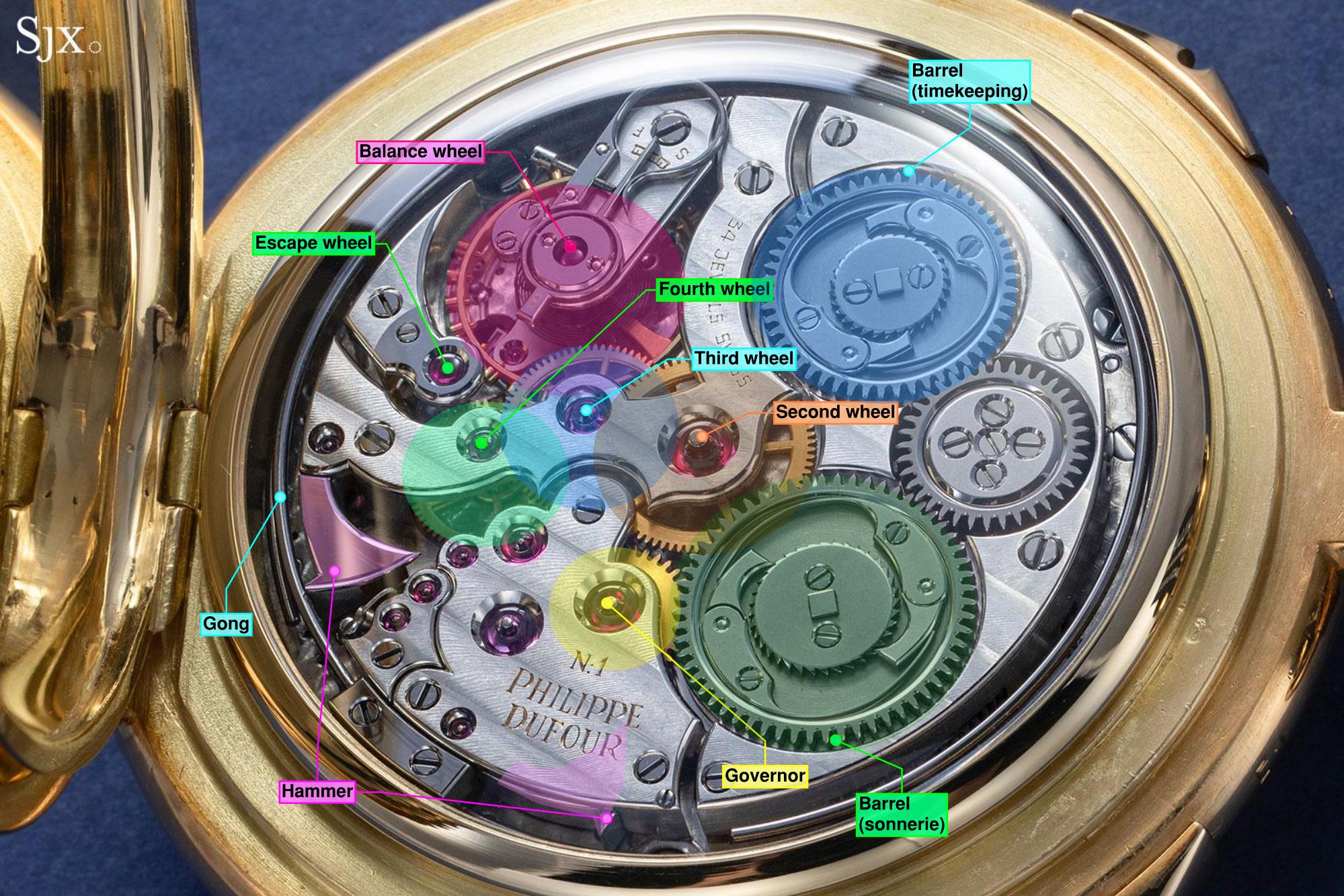
The key elements of the grande sonnerie movement
While the mechanics and architecture are similar to grande sonnerie movements of the early 20th century, the finishing is executed to a far higher level. As he would prove over the next three decades, Mr Dufour’s work pays tribute to historical watches but exceeded them in terms of decoration.
The shape of the bridges lend themselves to the stellar decoration that Mr Dufour is known for. Clearly no effort was spared with the design of the bridges, which intentionally incorporate as many elaborate curves and arches as possible. This transforms the bridges into a showcase of Geneva stripes and anglage, which is especially time consuming when done by hand.
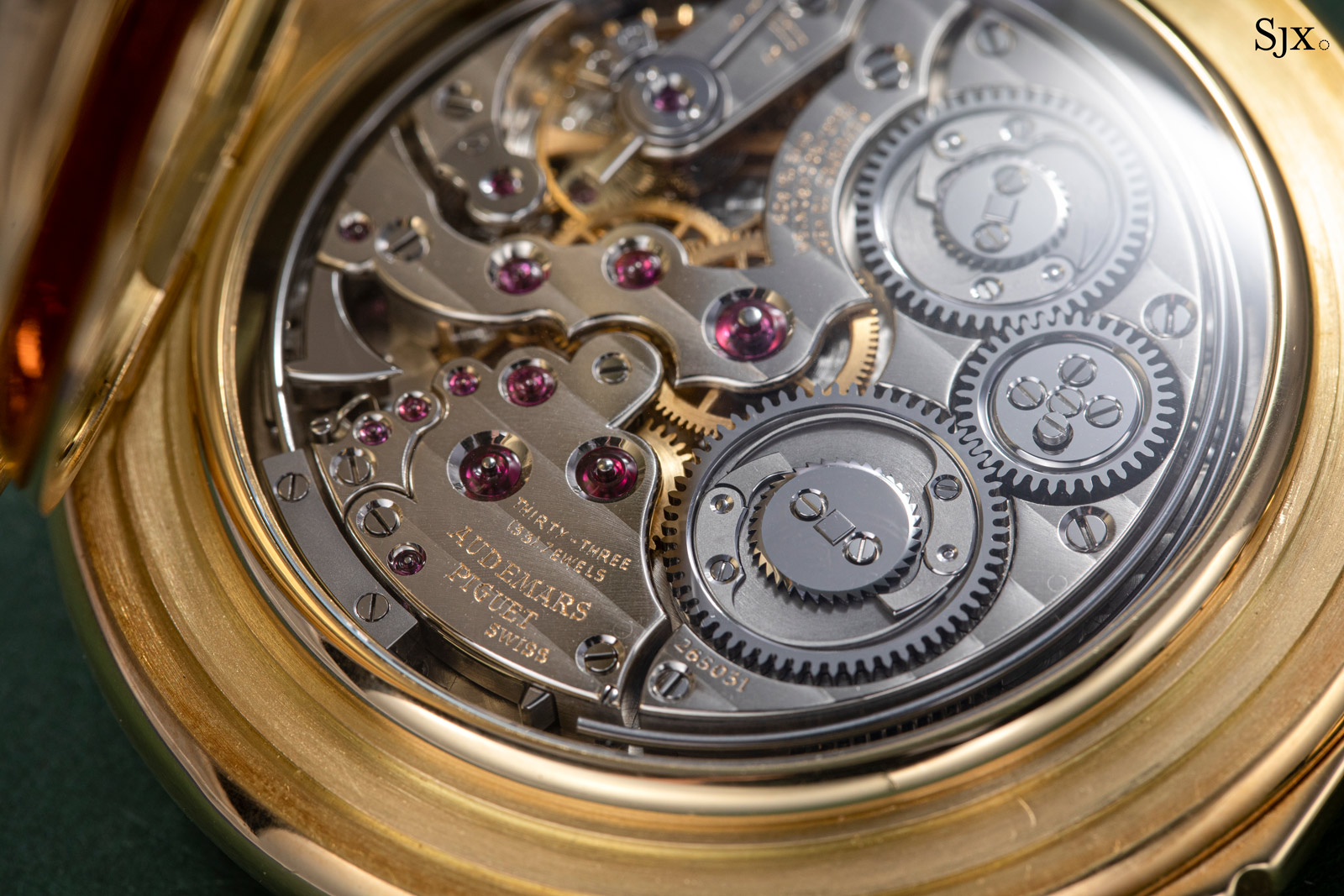
The sensual forms of the bridges create powerful aesthetic
For proof of Mr Dufour’s mastery, observe the island bridge bearing the AP logo. It incorporates elegant curves and inward angles along its edge while perfectly mating with the smaller bridge on its left, allowing the two to fit seamlessly together like a jigsaw puzzle.
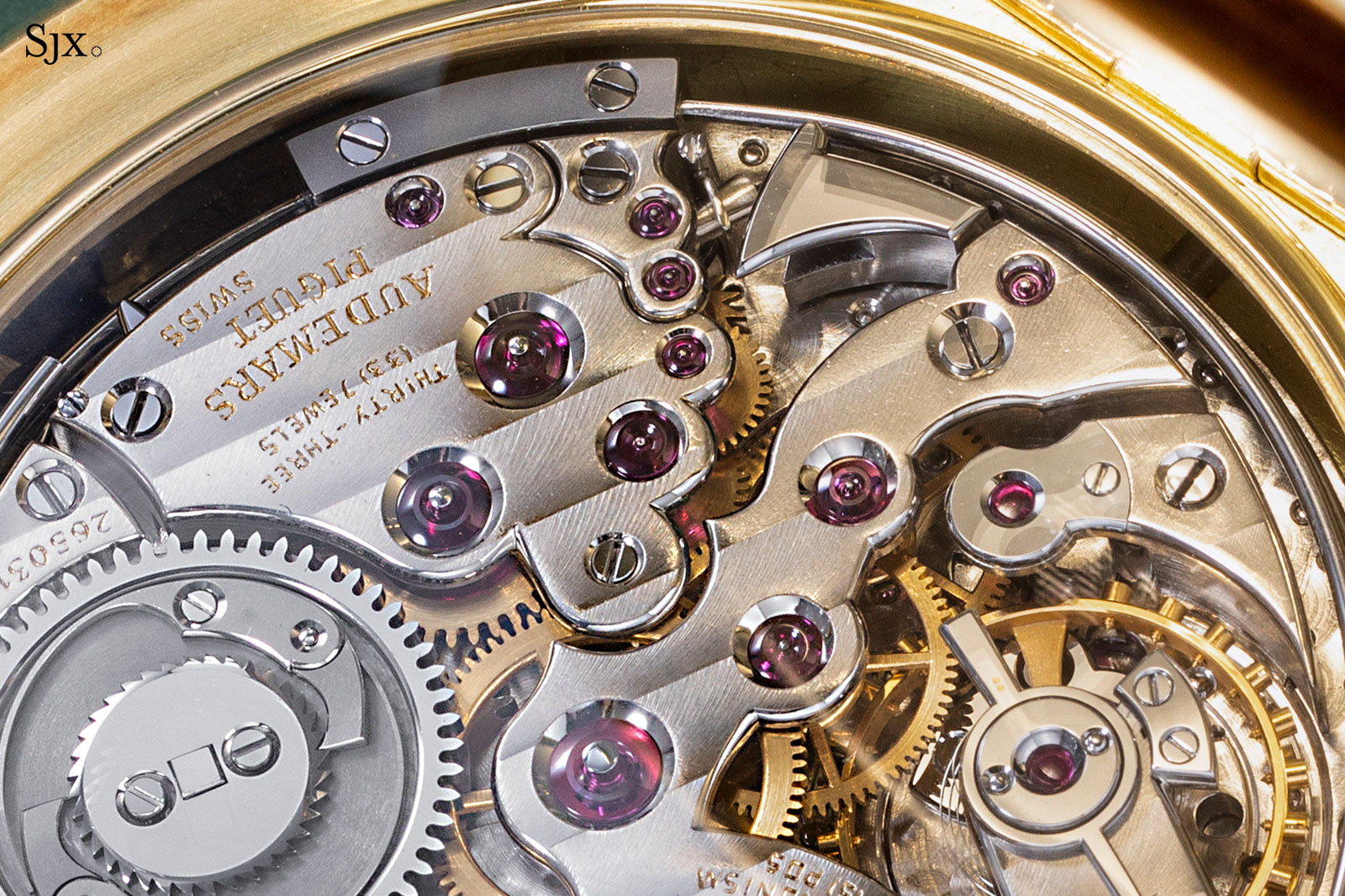
Naturally, the visible steel hammer is black-polished and chamfered on its edges
Another noteworthy detail are the large jewels, possible thanks to the large diameter of the movement. Because the jewels are so large, they are complemented by equally wide polished countersinks – a striking detail not often found in modern movements.
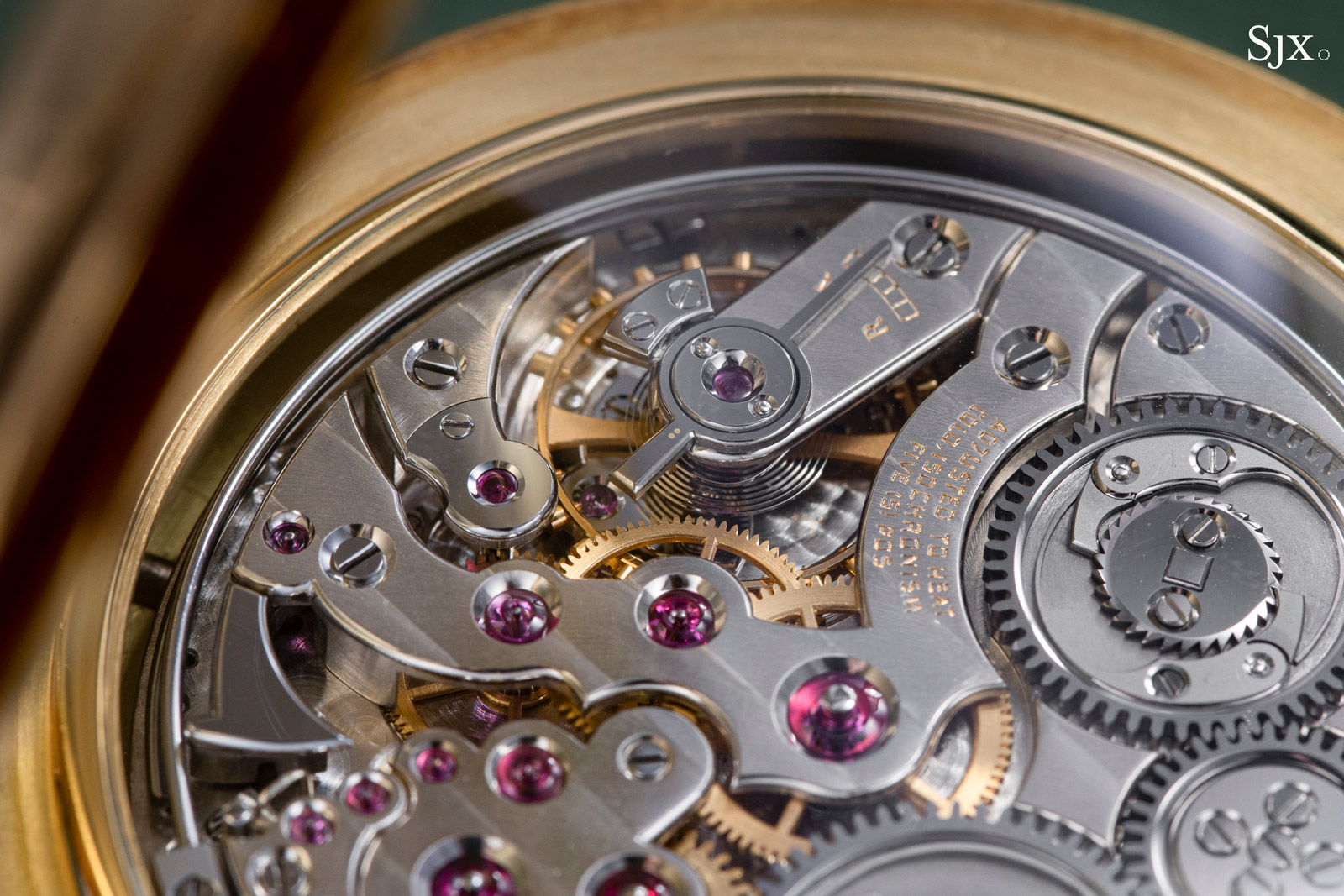
Perhaps the only contemporary watches decorated to a superior standard are Mr Dufour’s own works completed later in life. His subsequent grande sonnerie pocket watches that bear his own name, for instance, show off wider and more consistent bevelling on their movement bridges.
But this pocket watch is unquestionably top shelf when compared to everything and everyone else. And remember that Mr Dufour was barely in his mid-30s when he finished this.
Given the wonderful finishing, it is a shame that the fired enamel dial conceals the striking mechanism on the front – the myriad levers, detent springs, and bridges are meticulously finished. This was rectified on the final of the five watches Mr Dufour made for AP, which had a transparent sapphire dial, an idea that Mr Dufour later adopted for his grande sonnerie wristwatch that featured a similar transparent dial.
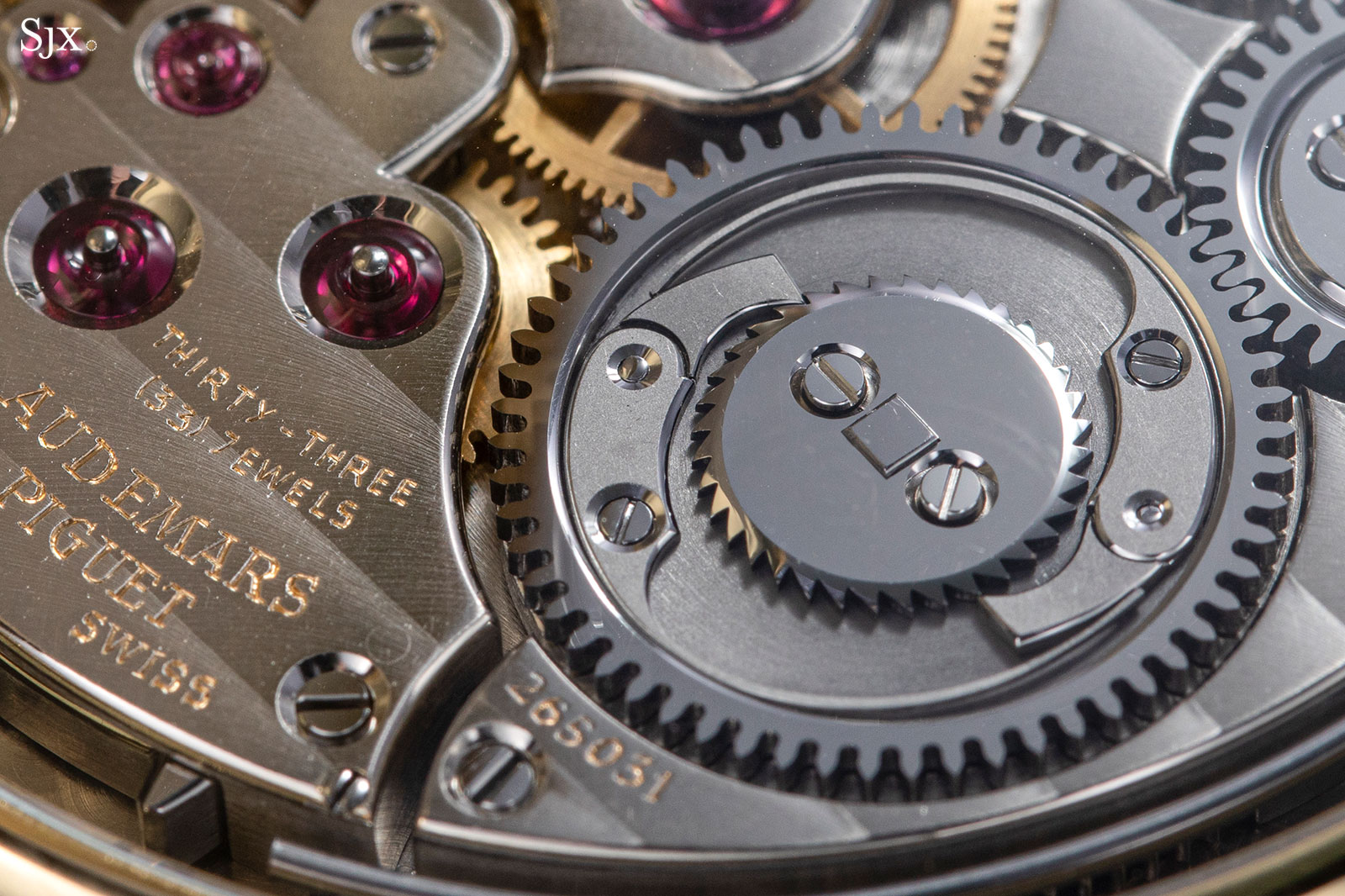
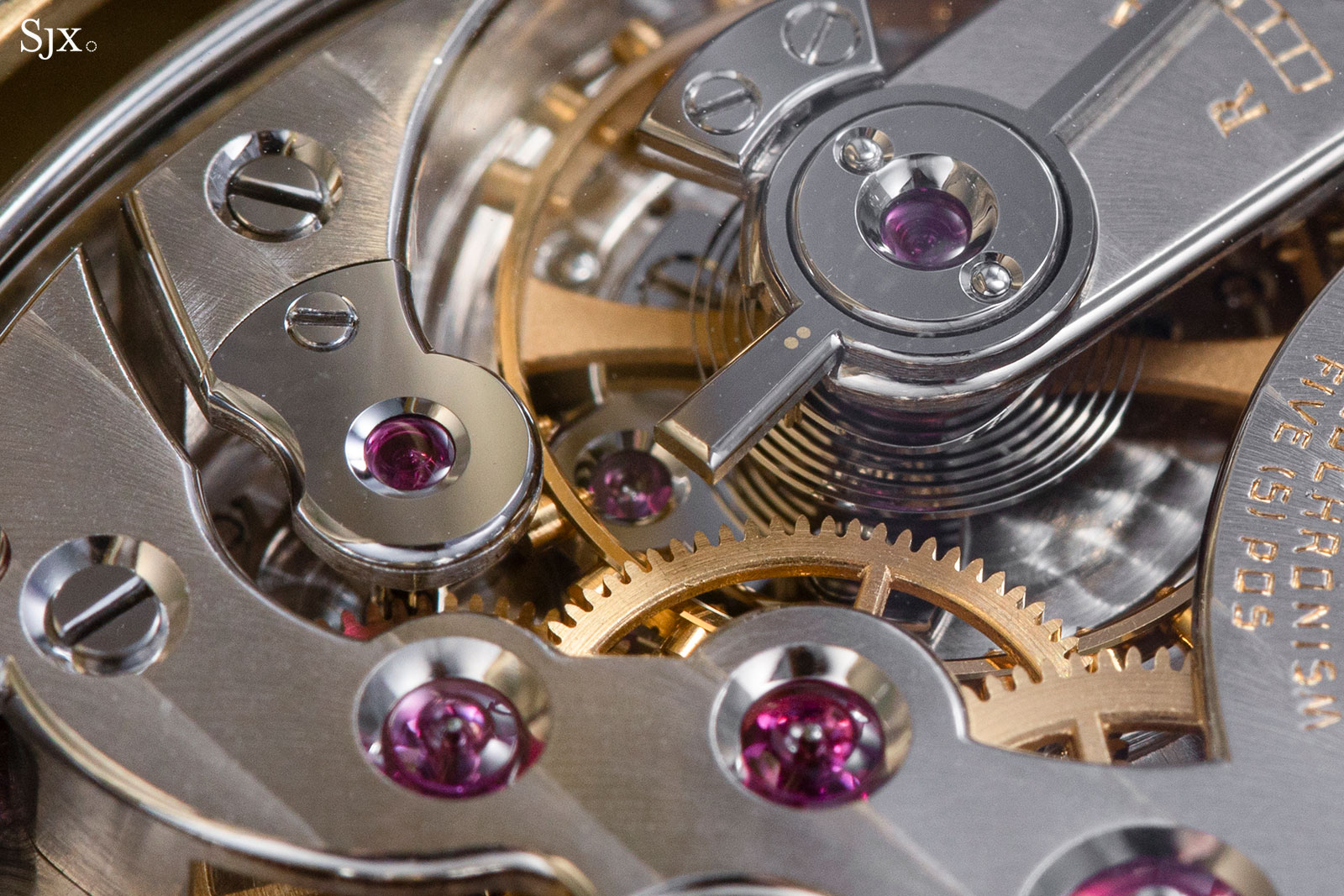
Concluding Thoughts
The AP Grande Sonnerie pocket watch no. 1 is arguably a landmark watch since it marked the start of Philippe Dufour’s career of making his own watches, albeit ones without his name on the dial. Despite being the earliest work of a thirty-something watchmaker, it is a masterclass in movement finishing – perhaps proof that talent is innate rather than learned.
The Audemars Piguet Grande Sonnerie Pocket Watch by Philippe Dufour is lot 127 in The Geneva Watch Auction: XVII and will be sold on the second day of the auction, May 14, 2023. For more on the watch, visit Phillips.com.
This was brought you in collaboration with Phillips.
Back to top.

